A Global View of RNA-Protein Interactions Identifies Post-transcriptional Regulators of Root Hair Cell Fate
- PMID: 28441533
- PMCID: PMC5605909
- DOI: 10.1016/j.devcel.2017.03.018
A Global View of RNA-Protein Interactions Identifies Post-transcriptional Regulators of Root Hair Cell Fate
Abstract
The Arabidopsis thaliana root epidermis is comprised of two cell types, hair and nonhair cells, which differentiate from the same precursor. Although the transcriptional programs regulating these events are well studied, post-transcriptional factors functioning in this cell fate decision are mostly unknown. Here, we globally identify RNA-protein interactions and RNA secondary structure in hair and nonhair cell nuclei. This analysis reveals distinct structural and protein binding patterns across both transcriptomes, allowing identification of differential RNA binding protein (RBP) recognition sites. Using these sequences, we identify two RBPs that regulate hair cell development. Specifically, we find that SERRATE functions in a microRNA-dependent manner to inhibit hair cell fate, while also terminating growth of root hairs mostly independent of microRNA biogenesis. In addition, we show that GLYCINE-RICH PROTEIN 8 promotes hair cell fate while alleviating phosphate starvation stress. In total, this global analysis reveals post-transcriptional regulators of plant root epidermal cell fate.
Keywords: RNA binding proteins; RNA biology; RNA secondary structure; phosphate starvation response; plant development; post-transcriptional regulation; root hairs.
Copyright © 2017 Elsevier Inc. All rights reserved.
Figures
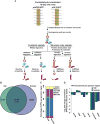
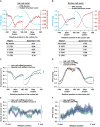
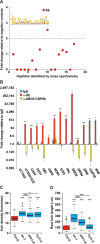
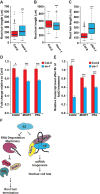
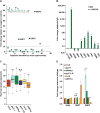
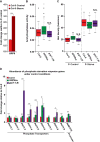
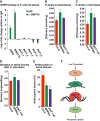
Similar articles
-
Molecular Basis for a Cell Fate Switch in Response to Impaired Ribosome Biogenesis in the Arabidopsis Root Epidermis.Plant Cell. 2020 Jul;32(7):2402-2423. doi: 10.1105/tpc.19.00773. Epub 2020 May 5. Plant Cell. 2020. PMID: 32371546 Free PMC article.
-
Cell fate in the Arabidopsis root epidermis is determined by competition between WEREWOLF and CAPRICE.Plant Physiol. 2011 Nov;157(3):1196-208. doi: 10.1104/pp.111.185785. Epub 2011 Sep 13. Plant Physiol. 2011. PMID: 21914815 Free PMC article.
-
Root Epidermal Cell Patterning Is Modulated by a Critical Residue in the WEREWOLF Transcription Factor.Plant Physiol. 2019 Nov;181(3):1239-1256. doi: 10.1104/pp.19.00458. Epub 2019 Sep 6. Plant Physiol. 2019. PMID: 31492737 Free PMC article.
-
Basic helix-loop-helix transcription factors and epidermal cell fate determination in Arabidopsis.Plant Signal Behav. 2012 Dec;7(12):1556-60. doi: 10.4161/psb.22404. Epub 2012 Oct 16. Plant Signal Behav. 2012. PMID: 23073001 Free PMC article. Review.
-
Receptor-like protein kinases: Key regulators controlling root hair development in Arabidopsis thaliana.J Integr Plant Biol. 2018 Sep;60(9):841-850. doi: 10.1111/jipb.12663. Epub 2018 Aug 23. J Integr Plant Biol. 2018. PMID: 29727051 Review.
Cited by
-
Analyses of mRNA structure dynamics identify embryonic gene regulatory programs.Nat Struct Mol Biol. 2018 Aug;25(8):677-686. doi: 10.1038/s41594-018-0091-z. Epub 2018 Jul 30. Nat Struct Mol Biol. 2018. PMID: 30061596 Free PMC article.
-
RNA structure probing uncovers RNA structure-dependent biological functions.Nat Chem Biol. 2021 Jul;17(7):755-766. doi: 10.1038/s41589-021-00805-7. Epub 2021 Jun 25. Nat Chem Biol. 2021. PMID: 34172967 Review.
-
Adaptation of iCLIP to plants determines the binding landscape of the clock-regulated RNA-binding protein AtGRP7.Genome Biol. 2017 Oct 31;18(1):204. doi: 10.1186/s13059-017-1332-x. Genome Biol. 2017. PMID: 29084609 Free PMC article.
-
Transcriptome meta-analysis-based identification of hub transcription factors and RNA-binding proteins potentially orchestrating gene regulatory cascades and crosstalk in response to abiotic stresses in Arabidopsis thaliana.J Appl Genet. 2024 May;65(2):255-269. doi: 10.1007/s13353-024-00837-4. Epub 2024 Feb 10. J Appl Genet. 2024. PMID: 38337133 Review.
-
Toward a systems view on RNA-binding proteins and associated RNAs in plants: Guilt by association.Plant Cell. 2023 May 29;35(6):1708-1726. doi: 10.1093/plcell/koac345. Plant Cell. 2023. PMID: 36461946 Free PMC article.
References
-
- Bates TR, Lynch JP. Stimulation of root hair elongation in Arabidopsis thaliana by low phosphorus availability. Plant Cell Environ. 1996;19:529–538.
-
- Clarke JH, Tack D, Findlay K, Van Montagu M, Van Lijsebettens M. The SERRATE locus controls the formation of the early juvenile leaves and phase length in Arabidopsis. Plant J Cell Mol Biol. 1999;20:493–501. - PubMed
-
- Cruz JA, Westhof E. The Dynamic Landscapes of RNA Architecture. Cell. 2009;136:604–609. - PubMed
Publication types
MeSH terms
Substances
Grants and funding
LinkOut - more resources
Full Text Sources
Other Literature Sources
Molecular Biology Databases
Miscellaneous

